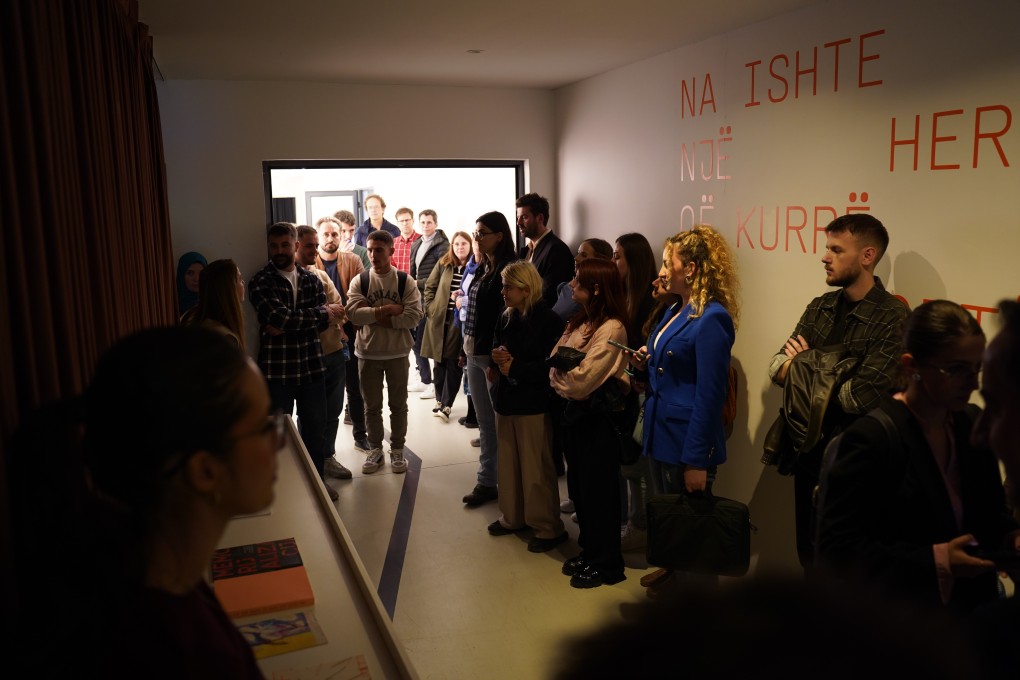Yesterday, on October 10, 2024, the exhibition ‘Dreams Take Place in My Old House’ by author Bleona Kurteshi opened at the Kosovo Documentation Center. Her work, far from the grandiose and heroic narratives of war, invites the audience to appreciate those small, personal stories that, when shared, naturally become universal.
What are dreams but fragments of memories stored deep within our subconscious? Like surreal, absurd collages, they merge and create new, elusive meanings—ungraspable, often unsettling. All that remains is a feeling of nostalgia, tinged with fear, which occasionally pushes its way to the surface—buried beneath layers of future promises, reconstructions, and hopes for a new life. The ruins of the past transform into a warm bed, the backdrop for new dreams to unfold.
The work presented by Bleona Kurteshi belongs to a certain life of the past. This is not a form of backwardness or living in the past, but rather resembles meditation. It is not so much a look backward as it is a look inward—an introspection.
The research consists of 10 semi-structured interviews where the main aim for the author was to bring to light a largely untouched discussion within Kosovo's post-war memorial initiatives: the legacy of war and the absence of its physical traces, where entire homes and villages burned by Serbian army offensives have been rebuilt from scratch, leaving behind almost no mark. But is this entirely true?
Gradually, as we delve into the lives of the interviewees, we realize that some very small traces have remained everywhere. For the artist herself, one such trace is a stump left like a wedge from the old house, which her grandmother absolutely refused to have torn down. It often obstructs the entrance to the yard, yet it stands there as a living memory, a heritage of what happened. In another story, there is a room from the old house, left alone in the middle of the yard, which neither enhances the yard nor the new house. However, it is the only place where the narrator can sleep comfortably, under the voices of family members and surrounded by old furniture, which he remembers as vividly as they once were.
Unfortunately, in other cases, the only remaining traces are those of memory. Based on this, we decided to collaborate with a young sculptor, Ardit Berisha, who, according to the descriptions, managed to mold from clay those walls of dreams.
The exhibition will remain open for one month, continuing the initiative for projects that have a focus in Dealing with the Past through artistic works and creations.
Supported by: Swiss Confederation - Swiss Federal Department for Foreign Affairs and NED.


